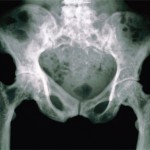
This summer, I decided to take a break from editorial writing and do some old-fashioned reporting while on vacation in England. I made this decision at an intriguing restaurant in a posh part of London. At dinner, one of my best friends, a British rheumatologist, and I engaged in a spirited discussion on the relative merits of our healthcare systems. Given our positions, I would have anticipated national loyalty, my friend touting the National Health Service (NHS) and me touting the American free market approach.
Instead our views were quite different. For my part, I expressed dismay about the inequities, inadequacies, and hassles of our healthcare system and the power of the ________ insurers (you fill in the blank). I told my friend that many Americans, including physicians, would be willing to try something new and accept a public option, if not a single payer system, an NHS-lite.

For his part, my friend expressed frustration with the NHS, with its escalating costs, cumbersome bureaucracy, and limitations on service. Furthermore, because my friend is subject to high taxes in the British system, he favored less, not more, public spending, with an expansion of the private sector via insurance pushing the public sector to better performance.
The evening was too enjoyable to have a serious debate. Imbibing a crisp wine for Gascogne to complement the imaginative curries, we moved onto less weighty subjects such as cricket and the Ashes, whatever they are. Nevertheless, I was inspired by our conversation to scope out the NHS on my vacation, knowing that the NHS is often cited as an example of what the United States should avoid—a centralized, socialistic (egad!) system where people queue up for joint replacements and doctors suffer from over-regulation.
Investigative Research
With my reporter’s pad at the ready, I set off to answer the question of whether the impact of the NHS is visible in the English population. I know that this approach sounds very unscientific, but without an NIH grant and a squadron of research assistants, it was the best I could do.
After leaving London, we took the train to York, an extraordinary old city that is home to the largest cathedral in North Europe. The York Minster is a glorious gray-tan gothic structure that has acres of stained glass and could easily accommodate three or four Duke Chapels.

